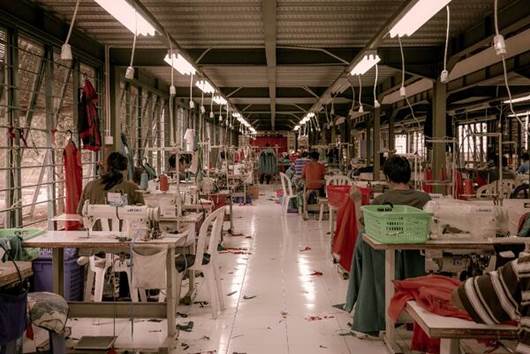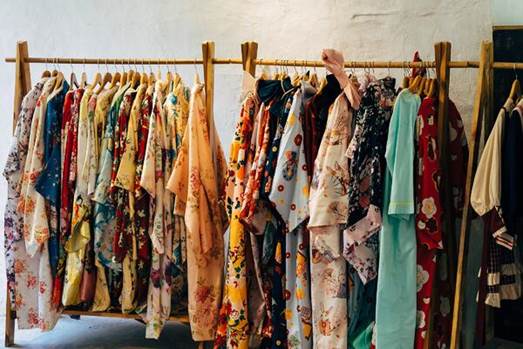If you didn’t go to fashion school, there’s a lot that you’ll have to learn a lot on your own. One of those things is the terminology used in the fashion industry. Fashion terms aren’t just fancy jargon that designers use to show off. Knowing the meaning of the most common words used in the industry will help you have a better mastery of your subject matter and better communicate with fashion buyers, garment producers, and industry partners.
Learning and understanding the correct words for the following fashion concepts will take some practice, but the more you use them, the more quickly you’ll master them and find yourself becoming a more knowledgeable fashion professional.
Fashion design terminology you will hear
A lot of fashion words in fashion are French because France started many new styles and trends for several centuries. Here we have some fashion terminology, en francais, that you will hear and use when you are designing:
•Pret-A-Porter: This term is French for ready to wear. Which means that the designs were made using standard sizing charts and the products are ready to wear by consumers.
•Haute Couture: Haute is French for high. Couture is French for dressmaking. Sometimes you will hear people say high fashion, or just couture. Haute Couture is the highest level of fashion. This is where the highest quality of products and craftsmanship happens in the industry, resulting in the most expensive designs.
•Couturier: A Couturier is a person or company that designs Haute Couture.
•Avant Garde: This means advance guard. In fashion, this term means being at the forefront of fashion. Avant Garde sets the new trends, techniques, and styles of fashion for everyone outside of fashion’s boundaries.
•Atelier: An atelier is a studio or workshop used by a designer where their work is done.
France’s long history in fashion have made the above words part of the industry, but you'll also use other non-French fashion terminology like:
•Silhouettes: The silhouette is the line and overall shape of the garment. If you are working on historical designs for theatre, costumes, or movies, the silhouette is very important for accuracy.
•Body Shapes: There are six body shapes: teardrop, inverted triangle, hourglass, column, oval, and figure eight.
•Classic: A classic is a style that has lasted through time, aka timeless.
•Fashion Cycle: A fashion cycle is the lifespan of a particular fashion. There are five stages: introduction, rise, peak, decline, and obsolescence. It’s the same as a product life cycle, but in fashion.
•In Vogue: This means that if something is literally in Vogue, then it’s fashionable.
•Textiles: Textile differs from the word fabric because a textile is a material that is woven.
•Look Book: A look book is a designer’s fashion collection displayed in photographs. These are often displayed on a designer’s website to show off their work.
Fashion terminology with manufacturers

Fashion Manufacturer
There is also specific fashion terminology related to working with manufacturers. These include a lot of abbreviations:
•CAD: This stands for computer-aided designer. This means you used Adobe Illustrator, or a similar tool, to create your design. A manufacturer might tell you at some point that they made suggestions on your CAD.
•CAM: This stands for computer-aided manufacture. This is a software manufacturers use to create your designs. The CAD is placed into the CAM system for production.
•Grading: Grading is taking the pattern sample size and adding, or decreasing, the pattern size. If the sample pattern size is a men’s M, and you need the pattern to be in an S and an L as well, that process of making those other sized patterns is called grading.
•CMT: This stands for cut, make, and trim.
•Flats: A flat is your design drawn flat with no patterns or color and shows of all the seams and darts from every view.
•PDS: This stands for Pattern Design System.
•PO: This is an abbreviation for Purchase Order.
•DTM: This stands for Dyed to Match.
Fashion Terminology in Sales

Fashion Terminology in Sales
When you handle all of the orders and shipping yourself, you’ll also need certain fashion terminology to communicate with distribution services and sales partners:
•BOM: This stands for bill of materials.
•POS: This stands for point of sale. This is the system where consumer transactions take place. There are also Cloud POS systems.
•DC: This stands for distribution centre.
•Brick and Click: A brick and click is when you have a brick and mortar store and a website.
•Fashion House: A fashion house is a place where clothes are designed, made, and sold. You will also hear terms like dyehouse, this is where fabric is dyed. Anything that follows “house” is usually what that house specialises in.
•Colourway: This is a fancy way of saying colour options for the same product. For example, if you designed a sandal, a colourway would be offering that sandal in red, pink, and white.
With your new vocabulary knowledge, you will be able to better communicate with manufacturers and designers and have a better understanding of the work you’re doing and why certain processes occur in certain ways. As you work in the fashion industry, you will pick up more terminology along the way; learning will come with experience.
This article has not been edited by Fibre2Fashion staff and is re-published with permission from makersvalley.net











Comments